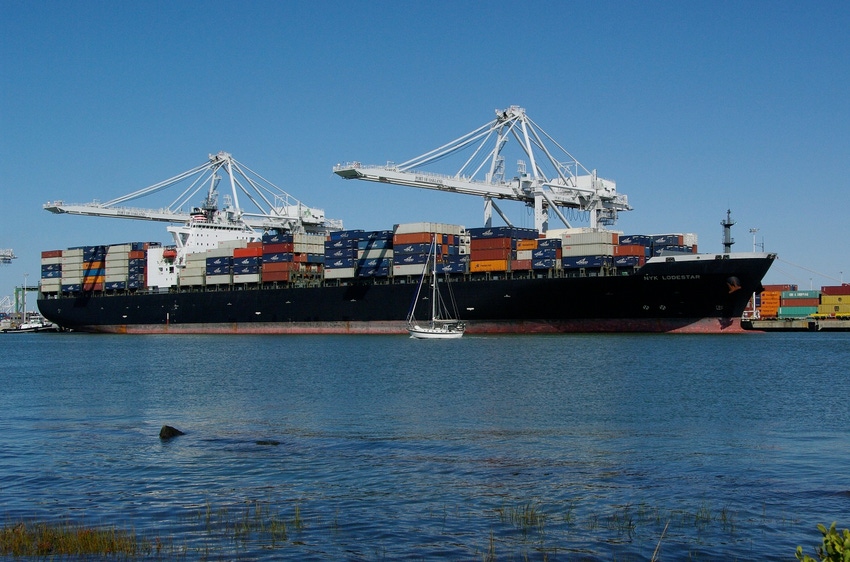U.S.-China trade war could hurt both countries
New reports detail how trade concerns put improved economic outlook at risk.

Talk of trade wars is complicating the U.S. economic outlook, but a fiscal stimulus from tax cuts and increased government spending will boost U.S. growth over the next 18 months. Despite challenges, there are abundant opportunities for U.S. agriculture this year amid drought in South America and growing export prospects. However, according to the latest "Rural Economic Review" from CoBank’s Knowledge Exchange Division, those opportunities are at risk.
“Optimism over global economic growth in 2018 remains high, but it is clear that downside risks to growth far outweigh the likelihood of upside surprises,” said Dan Kowalski, vice president of the CoBank Knowledge Exchange Division. “We are looking at 4% global growth, the highest since 2011. Developed countries such as the U.S. are providing the global stimulus needed for that growth, but trade concerns now put that at risk.”
Persistent drought in Argentina could cut its soybean output by 20-30%. Global soybean stocks are at multiyear highs, but Argentina’s sharp production loss puts increased focus on the U.S. growing season.
“Concerns over a potential trade war that could limit global trade volumes remains the greatest risk. Significant political uncertainty in many regions and the continuing trend toward nationalism and rising protectionist sentiment cannot be ignored,” CoBank said in its report.
Retaliatory impact on soybeans
Although soybeans weren't on the initial list of potential retaliatory duties from China in response to proposed U.S. import tariffs on steel and aluminum, soybean prices could take a major hit if China slaps tariffs on U.S. soybeans -- to the tune of as much as $3.3 billion in losses.
China's soybean imports from the U.S. could drop by as much 71% if China imposes trade restrictions on U.S. soybeans in response to U.S. tariffs on Chinese products, according to a study Purdue University agricultural economists Wally Tyner and Farzad Taheripour conducted for the U.S. Soybean Export Council.
China is the world’s largest soybean importer, buying 93 million metric tons of soybeans in 2016, mostly from Brazil, the U.S. and Argentina. Nearly two-thirds of all U.S. soybean exports - 62% - go to China.
The analysis by Taheripour and Tyner produced a wide range of results under different assumptions of protection rates, model parameters and product coverage.
Their best estimates of possible impacts show that if China were to adopt a 10% tariff on U.S. soybeans, U.S. exports to that country could fall by 33%. Total U.S. soybean exports could decline by 18%, and total U.S. soybean production could drop by 8%, the study found.
In a scenario where China imposed a 30% tariff, China's imports of U.S. soybeans could drop by 71%, total U.S. soybean exports could fall by 40% and total U.S. soybean production could decrease by 17%.
Taheripour said Chinese tariffs could sharply decrease the producer price of U.S. soybeans in the short term, while prices would fall by 2% and 5% over a few years under the respective 10% and 30% tariff scenarios.
Tyner said an escalating trade war could hurt both countries.
“The annual loss in U.S. economic well-being would range between $1.7 and $3.3 billion,” he noted. “China's economic well-being also falls if they impose a tariff, in some cases as much or more than for the U.S. The reason for that is that soybean imports are very important to their domestic economy.”
Additional impact
Exporters of ethanol, pork and specialty crops are suddenly faced with the possibility that tariffs could be imposed on their shipments to China if the country follows through on its threats to retaliate against President Donald Trump’s steel and aluminum tariffs.
Most nuts, dried and fresh fruits and wines would be affected by the levies. In 2017, China accounted for the following share of U.S. exports: wine, 4%, fresh fruits, 3%, processed fruits, 10%, and tree nuts, 3%.
The CoBank report noted that roughly one-fourth of all U.S. pork production is destined for the export channel. “Any disruptions in exports could result in domestic supply increases and compress margins across the entire supply chain,” the report stated.
Central America, the Association of Southeast Asian Nations and Oceania regions all experienced healthy volume increases in January. CoBank explained that China, which remains the driver of the global pork market, is ramping up domestic production, which is dampening its import demand.
“If enacted, China’s proposed 25% tariff on U.S. pork products would put European exporters in prime position to gain more market share from the U.S.,” CoBank said. In 2017, China accounted for 13% of total U.S. pork exports.
About the Author(s)
You May Also Like




